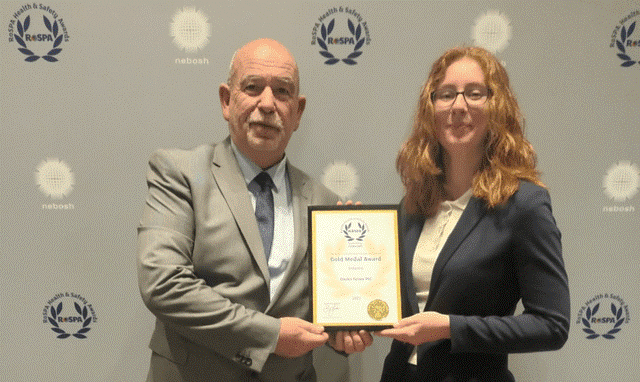With NetZero targets in place, ITM Editor Joseph Clarke explores the carbon-reducing options that are gaining in popularity and the organisations that are already going green
What is green shipping?
Green shipping refers to the transportation of people or goods by ships with a minimal use of resources and energy in order to safeguard the environment from ship-generated pollutants. The aim of green shipping is to promote cleaner practices, including emission control, efficient port management, and equipment management. Achieving this goal requires significant efforts from various industry stakeholders, such as regulators, port authorities, and communities.
As shipping plays a vital role in the global supply chain, the contribution of CO2 and greenhouse gas (GHG) emissions from the transportation sector has been on the rise, particularly event in the visible impacts of climate change. Currently, ships predominantly rely on heavy fuel oil derived from crude oil distillation, which emits sulphur during transportation. This sulphur not only poses risks to human health, causing respiratory and other diseases, but it also contributes to acid rain, harming crops, ocean species, and leading to ocean acidification.
To address these sulphur emissions, the International Maritime Organization (IMO) took a firm stance and implemented the IMO Sulphur 2020 mandate. This mandate required all ships to transition to alternative fuel oils emitting less than 0.50% sulphur into the environment starting from 1 January, 2020. Compliance with this mandate can result in a vast reduction in sulphur oxide (SOx) emissions, thereby mitigating air pollution.
Although shipping is considered the cleanest and safest mode of cargo transport, achieving green shipping practices poses significant challenges for the industry. While an average cargo ship with 8000 deadweight tonnage emits only 15g of CO2, which is far more efficient compared to trucks (50g) and air transport (540g), these emissions can increase by 50% to 250% with growing trade volumes. Over the past decade, efforts have been made to promote sustainable practices and green shipping initiatives. With the NetZero deadline getting nearer and nearer, shippers need to step up a gear and continue to implement green shipping methods.
Heavy fuel oil (HFO) has been the number one fuel for large ships for over a century due to its low cost and high energy density. A fairly small amount can power a ship for great distances. Also known as residual fuel oil, HFO is the sticky, tar-like residue that remains after petroleum crude has been catalytically treated and distilled to separate lighter, more valuable fuels like gasoline and automotive diesel. What is left over must then be heated to flow through ship engines. This heated mixture contains a mix of paraffins, olefins, aromatics, asphaltenes and compounds that contain sulphur, nitrogen and metals. In other words, this type of fuel is far from environmentally friendly.
With the shipping industry being faced with initiatives and regulations to clean their emissions, some shippers have switched from standard supplies of marine fuels to cleaner, costlier ones with less sulphur. In other cases, they mix very-low-sulphur fuels with others to achieve the needed purity. Some ship operators comply with the regulations by switching to less-polluting fuels just in certain coastal regions. Other shippers continue using standard fuels and treat engine exhaust chemically to remove the oxides of nitrogen and sulphur.
While these methods obviously do help to reduce the number of harmful emissions, many key players from the industry players agree that the most promising path to further clean up emissions is by moving away entirely from traditional HFO and toward alternative fuels. The alternative fuels that the industry is considering all have advantages and disadvantages, which experts are weighing up.
Alternative fuels
Liquefied natural gas (LNG) is typically composed of approximately 90% methane, a small amount of ethane, and a mix of other light alkanes. LNG is cooled to cryogenic temperatures (–162 °C) by suppliers to transform it into a liquid state for storage in non-pressurised containers, occupying a mere fraction of its gaseous volume—about one six-hundredth.
LNG boasts several advantages over HFO. By transitioning from HFO to LNG, the reduction in SOx emissions could reach 99%, while NOx emissions could drop by 80%, and CO2 emissions could be slashed by up to 20%. Additionally, LNG produces minimal particulate matter. However, one key drawback is its predominant methane content, which possesses a significantly higher global warming potential than CO2—estimated to be 86 times greater. Consequently, even minor gas leaks during production, refuelling, or utilisation could result in a relative increase in greenhouse gas emissions.
Furthermore, the adoption of LNG entails substantial capital investment for LNG-compatible engines, fuel tanks and the establishment of new infrastructure for ship refuelling at ports, a process known as bunkering. Some industry observers question the viability of further investing in LNG due to its prolonged dependence on carbon-based fuels for at least two more decades, which aligns with the typical lifespan of large vessels.
Hydrogen often receives attention as a clean fuel owing to its sole combustion byproduct—water. However, the eco-friendliness of hydrogen heavily relies on its production method. Researchers Selma Atilhan and Mahmoud M. El-Halwagi from Texas A&M University, along with their colleagues, conducted an analysis of hydrogen as a shipping fuel, evaluating its environmental impact based on the approach employed for its production.
The team categorised hydrogen into three types. “Gray” refers to hydrogen produced by reforming natural gas or other fossil fuels, which accounts for around 95% of global hydrogen production. “Blue” denotes standard hydrogen production with captured, stored, or utilised carbon emissions. “Green” signifies hydrogen derived from renewable feedstocks, using renewable energy sources throughout the production process.
Renewable hydrogen can be generated by splitting water using solar power, wind energy, nuclear power, hydropower, and other renewable sources. The construction of plants capable of producing hundreds of metric tons of hydrogen per day through these methods is currently underway.
Methanol production predominantly relies on the catalytic conversion of synthesis gas—a mixture of carbon monoxide and hydrogen obtained from natural gas reforming or coal gasification. However, methanol has also been derived from various solid and liquid biomass sources, including agricultural and forest residues, as well as farming and poultry waste.
Shifting to methanol derived from these biomass sources could reduce shipping emissions and alleviate the industry’s overall environmental impact. Additionally, while many of the technologies required for large-scale methanol production from these biomass sources have not yet been commercialised for the shipping industry, they have demonstrated feasibility at the pilot or demonstration scale.
Compared to other alternative fuels, methanol presents several advantages. Its liquid state at ambient temperature facilitates storage, transportation, and utilisation, making its implementation as a shipping fuel relatively more straightforward compared to the transition to cryogenic LNG or gaseous fuels like hydrogen.
Maersk, a pioneer in carbon-neutral shipping, will set sail on its voyage to NetZero with the introduction of its first shipping vessel powered by carbon-neutral methanol in the first quarter of 2024. These vessels, constructed by Hyundai Heavy Industries (HHI), will have an approximate capacity of 16,000 containers (Twenty Foot Equivalent – TEU). The agreement with HHI also includes an option for an additional four vessels in 2025. By replacing older vessels, this series will result in annual CO2 emissions savings of approximately 1 million tonnes, a significant step towards sustainability. What sets these vessels apart is that they will offer Maersk customers truly carbon-neutral transportation on a large scale across the high seas, a first for the industry.
Over half of Maersk’s 200 largest customers have either established or are in the process of establishing ambitious science-based or zero-carbon targets for their supply chains. As part of Maersk’s ongoing collaboration with its customers, corporate sustainability leaders such as Amazon, Disney, H&M Group, HP Inc., Levi Strauss & Co., Microsoft, Novo Nordisk, The Procter and Gamble Company, PUMA, Schneider Electric, Signify, Syngenta, and Unilever have committed to actively utilising and scaling zero-carbon solutions for their ocean transport. Many more companies are expected to follow suit.
The vessels will be equipped with a dual-fuel engine setup. The additional capital expenditure (CAPEX) for this dual-fuel capability, allowing operation on methanol as well as conventional low-sulphur fuel, will range from 10% to 15% of the total price. This investment enables Maersk to take a significant leap forward in its commitment to scaling carbon-neutral solutions and leading the decarbonisation of container logistics.
Maersk aims to operate these vessels using carbon-neutral e-methanol or sustainable bio-methanol as soon as possible. However, securing a sufficient supply of carbon-neutral methanol from the vessel’s first day of service poses a challenge, as it requires a substantial ramp-up in the production of proper carbon-neutral methanol. To address this, Maersk is actively engaging in partnerships and collaborations with relevant players in the industry.
Electric shipping vessels
Electrical solutions and their significance on vessels have been integral to vessel design for many years. These solutions encompass various technologies such as diesel-electric propulsion, shaft generators, hybrids and now fuel cells. This capability not only provides a clear pathway to decarbonisation but also offers the potential for zero-emission vessels. By incorporating electrical solutions into vessel designs or as upgrades, the propulsion system of a vessel becomes more flexible. In its simplest form, this allows the internal combustion engine to work optimally, regardless of the fuel being used, and enables the vessel to operate with zero emissions using battery power alone.
As technology progresses, we observe a compelling convergence between the marine trend of electrical propulsion and the increasing adoption of renewable energy sources such as wind, water, and solar in the onshore electrical grid. Consequently, there is a logical progression towards integrating shore-based green energy with vessels capable of utilising a combination of shore connection and onboard generation. This integration empowers vessels to significantly reduce emissions.
This integrated electrical approach brings about enhanced flexibility, which was previously not a significant consideration in vessel design. In the past, when slow steaming was the preferred method for emission reduction, the lack of flexibility meant that some vessels could never be fully optimised. However, the use of electrical systems onboard enables smarter propulsion systems that are more resilient and adaptable to future needs.
What existing technologies are available?
- Diesel-electric drive: Electricity is generated by diesel generators, which then powers the electric engine responsible for propelling the ship.
- Hybrid drive: In addition to the internal combustion engine, batteries are installed onboard. They can be activated temporarily to provide extra power during peak demands or store surplus energy from the diesel generator. This allows the ship to operate solely on electricity for a certain period of time.
- Fully electric drive: This configuration lacks an internal combustion engine, relying solely on batteries to provide all the required energy for propulsion.
Fully electric
In 2022, the world’s first fully electric and autonomous shipping vessel was put into operation. Built by Yara and technology company KONGSBERG, the world’s first autonomous and zero-emission container vessel, Yara Birkeland, will remove 40,000 diesel-powered truck journeys every year, and reduce NOx (Nitrogen oxide) and CO2 emissions, improve road safety, reduce road dust formation and traffic noise. The zero-emission vessel will transport mineral fertiliser from Yara’s production plant in Porsgrunn, Norway, to the regional export port in Brevik.
The ship was first conceptualised in 2017 and is capable of carrying 103 containers at a top speed of 13 knots. With a 7 MWh battery, the shipping vessel boasts a capacity that is around 1000 times that of one electrical car.
With carbon-neutral shipping methods now clearly established, and with organisations like Yara and Maersk showing that it is indeed possible, the race to NetZero shipping is now officially on!
Read more news and exclusive features in our latest issue here.
Never miss a story… Follow us on:
International Trade Magazine
@itm_magazine
@intrademagazine
Media Contact
Joseph Clarke
Editor, International Trade Magazine
Tel: +44 (0) 1622 823 920
Email: editor@intrademagazine.com





